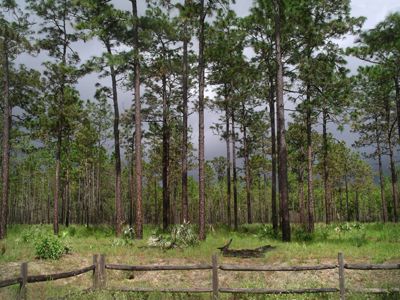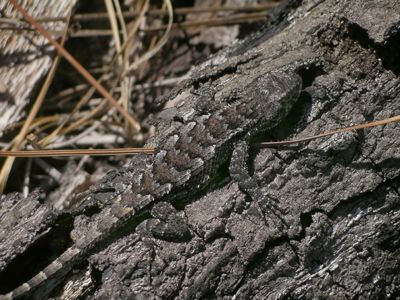
The Sandhill Trail in Silver Springs State Park, Florida.
It is fun to discover a new place. Traveling around the country, or even world, to see areas for the first time is quite appealing, and many people embrace their urge to explore new horizons, driving or flying to widespread destinations during their vacation time, which can be a precious resource during one's working career. While I like to do the same, I have come to realize that I don't share that same level of enthusiasm for the initial visit. Getting to know a place through multiple experiences seems more my style. In fact, many places that I find unappealing at first turn out to be more hospitable with time and familiarity. My current domicile is a case in point. When I moved to Austin, TX, over three decades ago, my initial
 The Sandhill Trail in Silver Springs State Park, Florida. |
Of course, I'm still here, and I've not only become accustomed to the climate, but have discovered activities and aspects of the place that make life here downright good. I don't feel like leaving. But I DO like to visit some other favorite haunts now and then.
One such place is Ocala, FL, where my mother lives. I've occasionally traveled in the Sunshine State throughout my whole life, and even lived in Tallahassee for a couple of years. I'm familiar with the area and have sites that I specifically like to return to just about every time I can. Seeing the same spot in different seasons and conditions, even if my visits are spread over years, brings a comfortable sense of belonging, while allowing me to add layers of observations and understanding to the ecosystem in which I'm wandering.
 A longleaf pine seedling with its seed cover still attached. |
A very specific locale that offers constant entertainment for a nature nerd like me is the Sandhill Trail within Silver Springs State Park. All I have to do is walk around the parking lot and I never fail to see something that catches my attention. I can spend hours poking around just within sight of the ranger station at the entrance to the park.
Why is this one little area so intriguing? It is simply a fairly open pine woods, with a bunch of native vegetation in very sandy soil. There is no water source immediately adjacent, although the river and swampy areas are not terribly far away. The vegetation is exceptionally diverse, and the explanation is apparent: controlled burns are conducted about every five years or so.
 A Florida Sand Roach with exceptionally dark coloration. |
The sand pine habitat of Florida is shaped by a basic fact of the local climate; nowhere else in the U.S. are there so many lightning strikes. Frequent lightning causes fires and, over millennia, the vegetation has adapted to thrive under these circumstances. The longleaf pine seeds need the fire to clear ground cover and prepare the soil for their optimum germination. Because lightning usually accompanies rain storms, the ashy soil left in between dead or fallen trees after a blaze will often retain the moisture that seedlings require.
The widely spaced pines provide an almost park-like environment at ground level. After a fire, most of the low foliage is gone, but many of those plants have deep roots and regenerate quickly. Others are annuals with thickly covered seeds that sprout rapidly in the now ideal conditions. Just weeks after a burn, new growth is everywhere. The most inconvenient aspect of walking through a recently devastated plot is that the charcoal branches and logs leave their soot on pant legs, shoes, arms and anything else that touches them. It's a mess to clean off, and it takes many months of rains to finally wash away that soft black layer.
 A dark-hued Fence Lizard warms itself on a fallen burnt log. |
It might seem counterintuitive to choose to stroll through a wooded area recurrently denuded by fire. And, in fact, I wasn't immediately enamored with that type of habitat. For someone interested in nature, wildlife, ecology, or botany, though, it is a fascinating and singular sort of site. Diversity is the spice of life, and life in all its varieties can be a source of endless wonder.